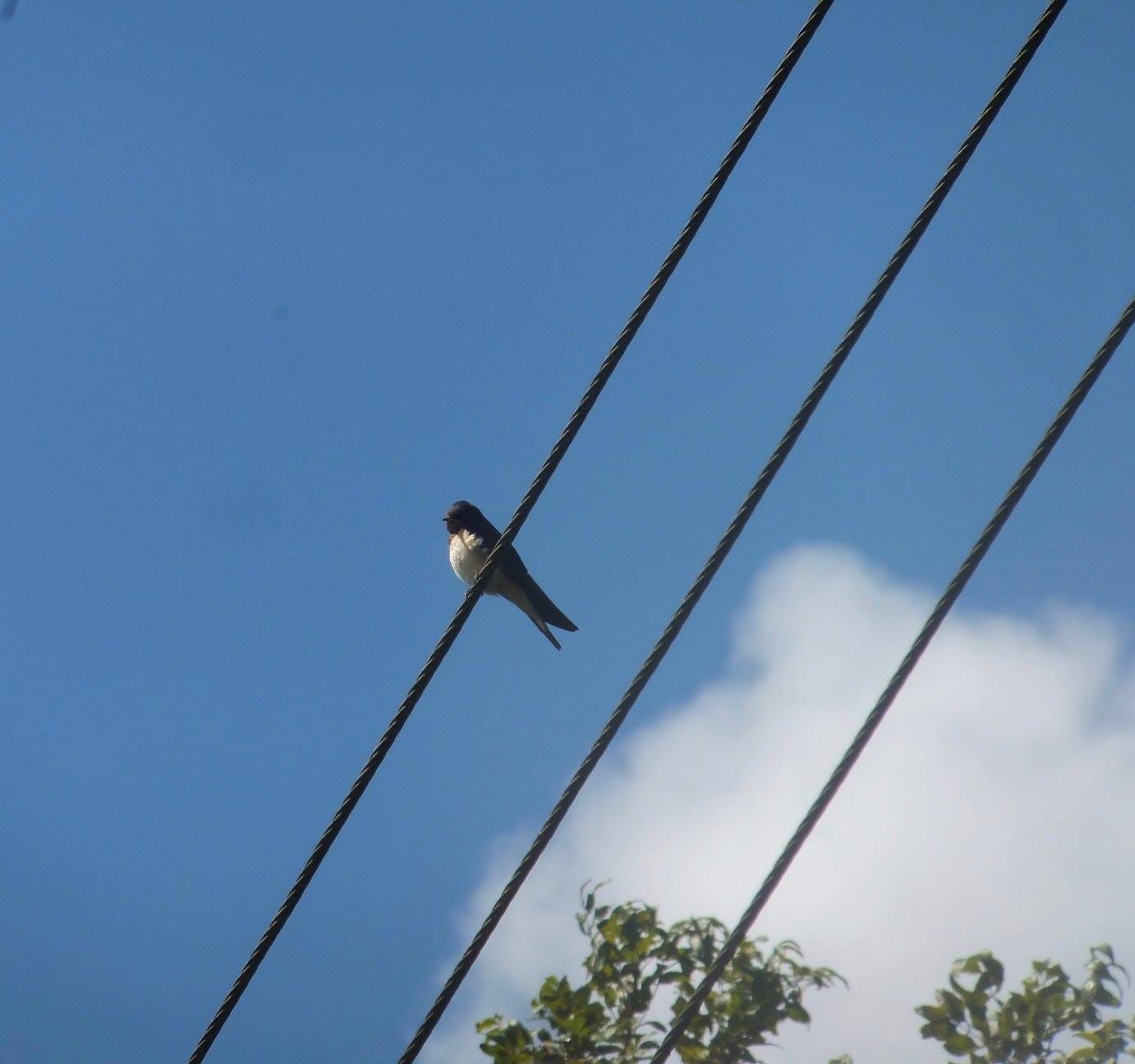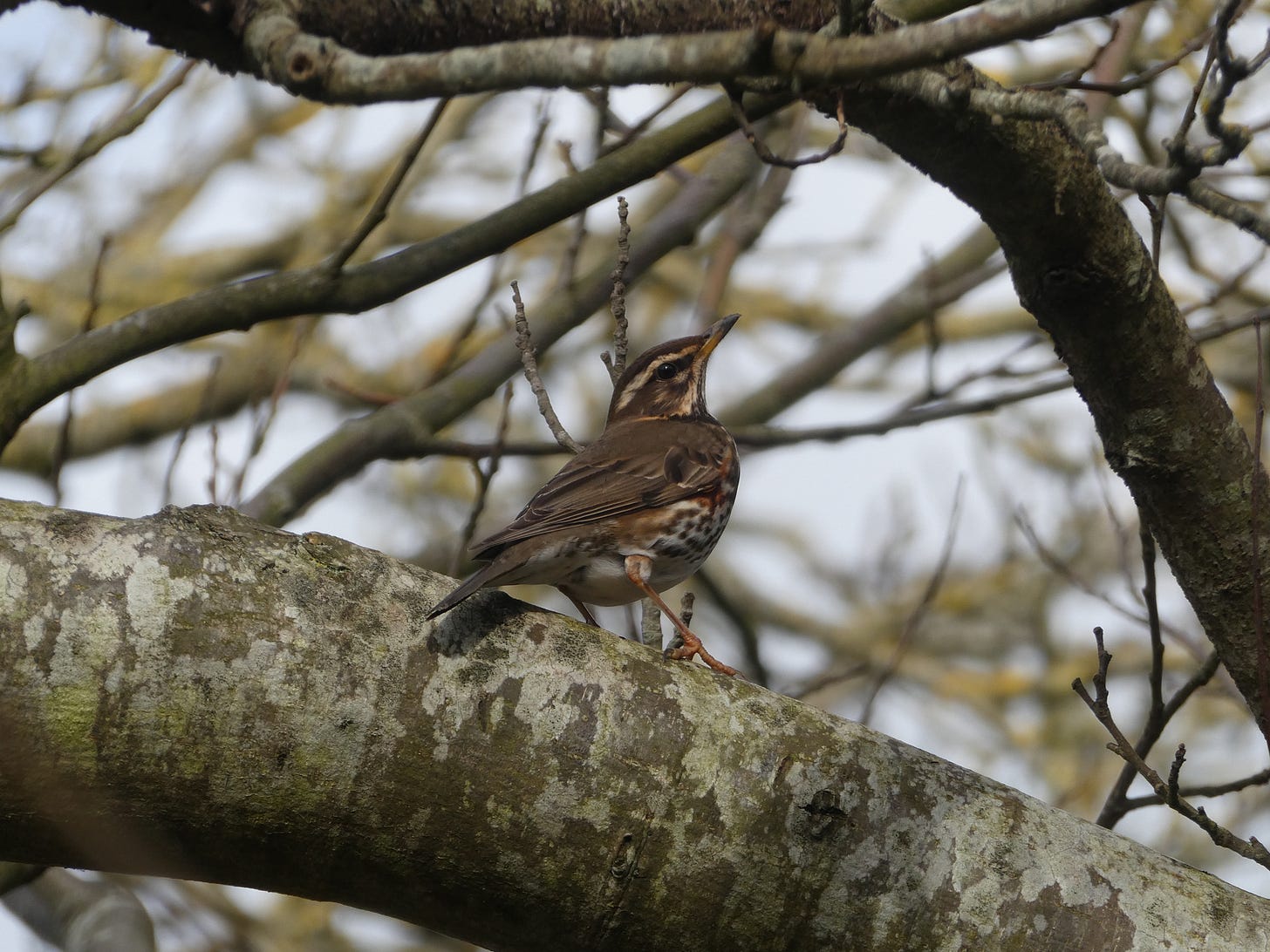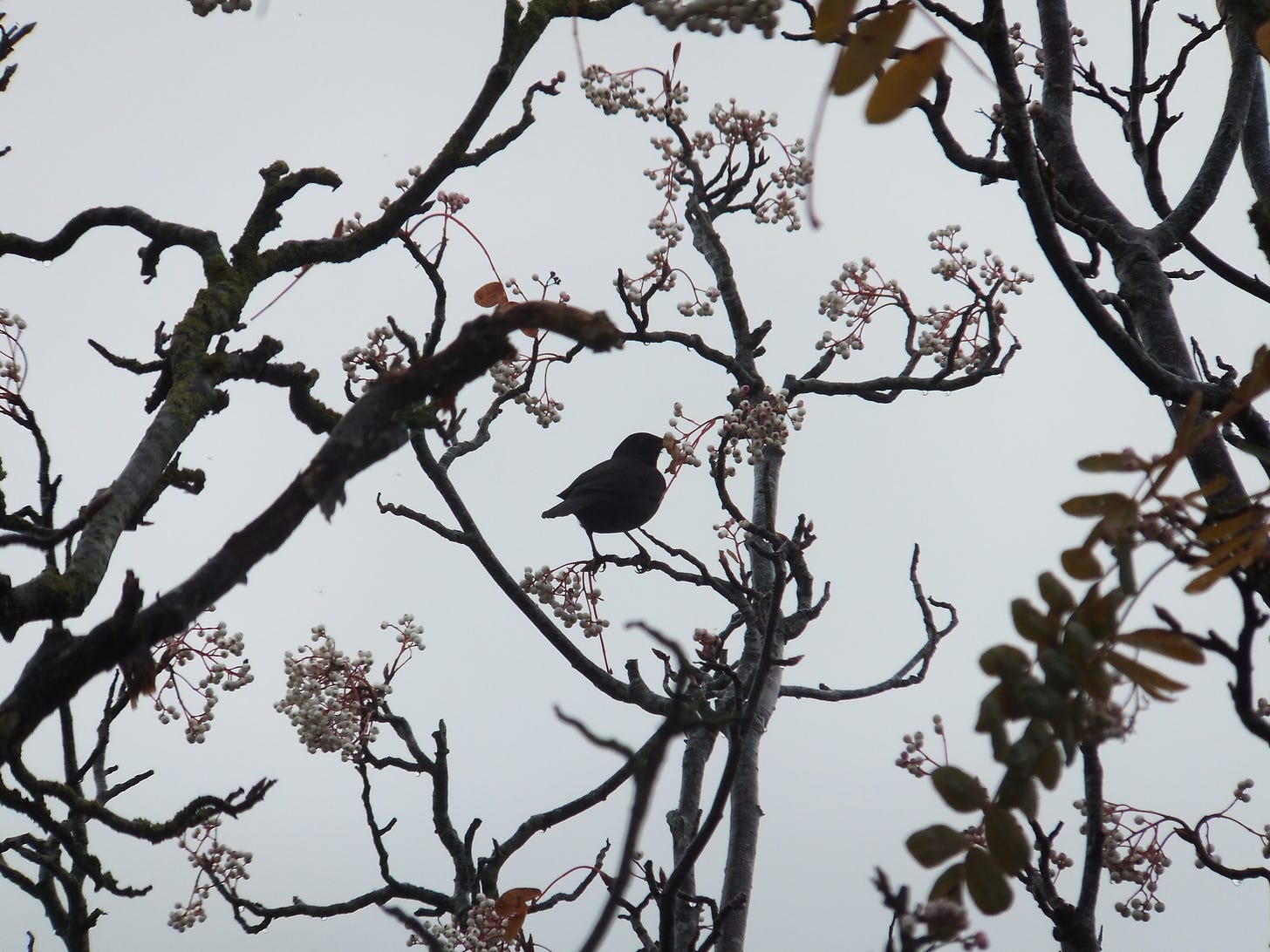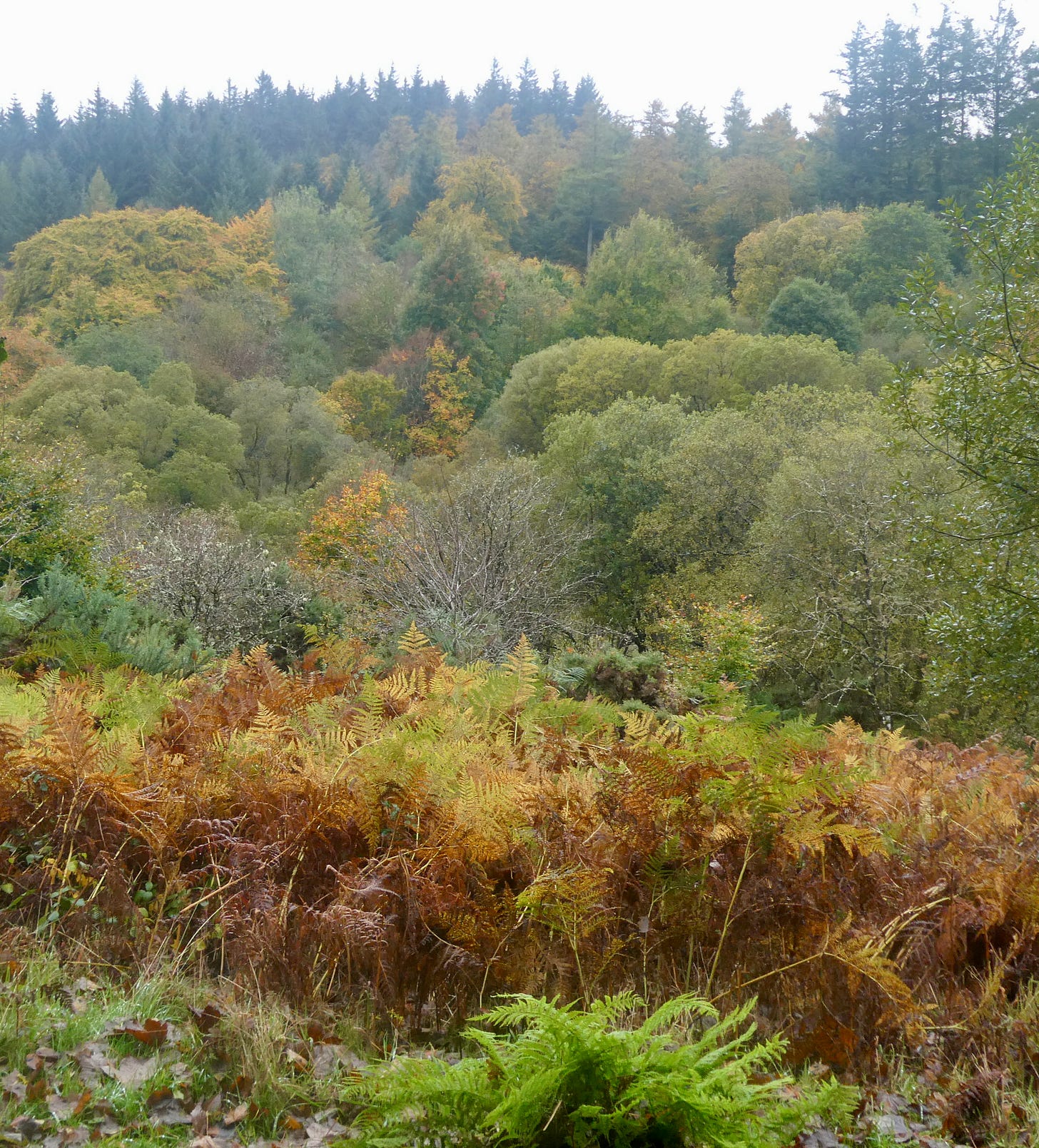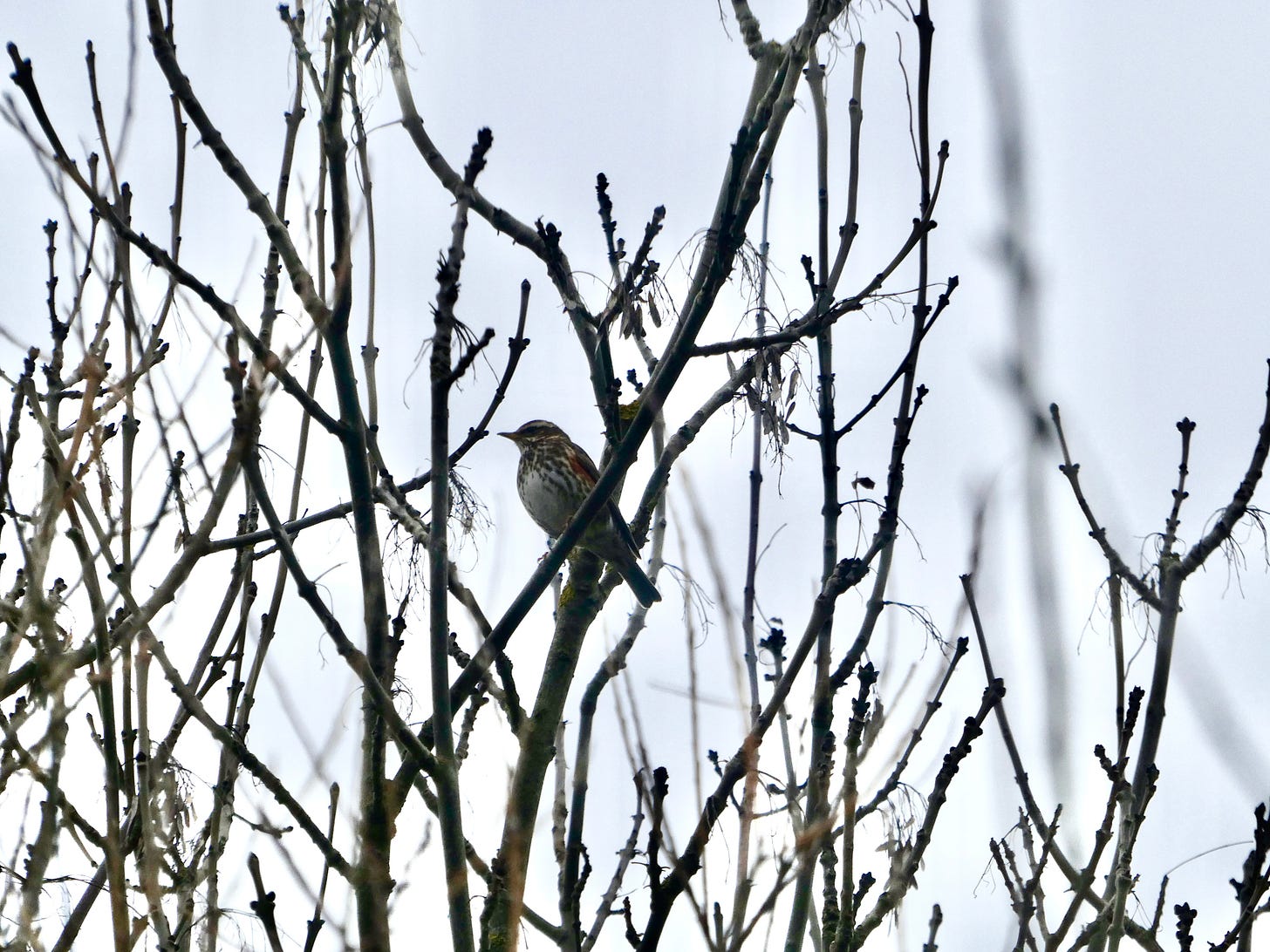A time for everything...
“Look on every exit as being an entrance somewhere else" (Tom Stoppard, Rosencrantz and Guildenstern are Dead)
I used to mildly dislike migratory birds. I put them to one side and focused on our year-round bird species. I felt that if a bird only spent part of the year on these shores it was of less interest somehow.
I made an exception for swifts and swallows. Possibly because I didn’t know until fairly recently that they travelled so far away for the other half of the year. I’m not sure that I really thought about their absence at all. I’ve long been entranced by the swirling flight of swallows and house/sand martins (these have the collective name of hirundines, belonging to the same bird family). I love the dark midnight blue of swallows, the fleck of bright red, and their streaming tails. It is also helpful that that hirundines land occasionally, sometimes on telegraph wires.
Swifts are amazing too - they spend nearly their entire lives on the wing, and apparently they can fly at up to seventy miles per hour. The aesthetic qualities of swifts lie purely in their amazing aerodynamic shape. When I was young I used to lie on the lawn in the summer staring up at the swifts wheeling round in the blue sky. It was wonderfully calming.
In Exeter, we have house martins, swallows and swifts passing through. My new interest in migratory birds partly came about because I saw that the swallows arrived en masse, but only hung around for a while and went elsewhere (where, I am not sure). It was very rainy that spring and they were flying low, so I had amazing views of swallows zipping past right in front of me. They love to catch flies which hover near water, and sometimes you can see them dipping down low to the water level. Did you know that you can use these birds to tell if it will soon rain (or just has?). They fly lower in wet weather, and higher up when it is warm and dry. I have an unscientific theory that summer visitors pass through Exeter on their way north. This makes us a sort of motorway service station (we are just off the M5). The river makes it a good stopping place, that’s for sure. It’s the same reason we have lots of bats near the river too.
The summer visitors are pretty special, but I wanted to say something too about the winter visitors, many of whom are on their way north around about now, in spring). My favourite of these are redwings. Redwings are a type of thrush, and look fairly similar to song thrushes and fieldfares, but are smaller and more delicate. These birds often hang around in flocks, confusing the casual beholder further. Spotting a redwing is a sign that winter is coming. Like blackbirds, who are part of the same family, they love eating berries.
In 2022 we took our summer holiday in Helsinki, Finland and I saw redwings for the first time in the middle of the summer. They were hopping about in a park on a hot summer’s day. (Incidentally, another unusual feature of Helsinki is the abundance of hares, wandering around the city centre parks.)
In October we went on a rainy walk in Dartmoor (our very first walk on Dartmoor as it happened) and saw vast flocks of birds flying over a reservoir. These were the redwings and other winter thrushes returning. When we say goodbye to the redwings for another spring and summer, we know they will be back again come autumn. Unlike with the arrival of swifts and swallows, the departure of the migratory birds is less noticable. One day, they are just no longer around, and we have moved on to thinking of the delights of spring.
Why does this all matter? Time can seem like a circle, with seasons spinning past more quickly every year; we know with each passing spring we have aged another year. Time is more like a spiral, where we pass a similar point but we, and the world around us, are not the same. In the British Isles, the weather is never the same from one day to the next, let alone from one spring to the next, so no two springs are really alike.
Some people have a favourite season, but as time has passed the question of my favourite season has seemed more absurd to me. Which is my favourite? I don’t have one. It’s this instead - the fact that they change. With each year my sensitivity towards the seasons has increased, and I try to live in each season more fully. This act of noticing the tiny differences as leaves come into bud, flowers appear, fruits ripen, is deeply consoling. More comforting still is the sense that all this will continue. Nature connects us to the people who have gone before, and the ones who will come after. Having said that, we should not forget that species like swifts are under threat. The nature that I can see and enjoy now is not the same nature as that which my grandmother enjoyed in her 1920s childhood.
Still, I look forward to seeing the first swallow of spring, but I will equally look forward to the redwings coming back in the autumn. See you soon guys.
Some things to spot right now (or in a bit, if you live further north)
Blackthorn is in bloom. This will be followed by hawthorn, but a bit later.
Hornbeam is coming into leaf, as is hazel.
Celandines are everywhere (those are the bright yellow flowers that aren’t buttercups!)
You might see the first butterflies of the year - brimstones, small tortoiseshells.
A note…
Lev Parikian (on Twitter, he also has a Substack here) likes to count down to the arrival of the first swift. He has also written a book about ‘microseasons’ and often tweets about birds.
If you have found my bird photography frustrating (I find it frustrating too!) I heartily recommend the bird photography of Carl Bovis (also on Twitter, Instagram and elsewhere).
The British Trust for Ornithology has tracked cuckoos (another migratory species) and they have given the tracked birds names. Check out their Instagram page.



